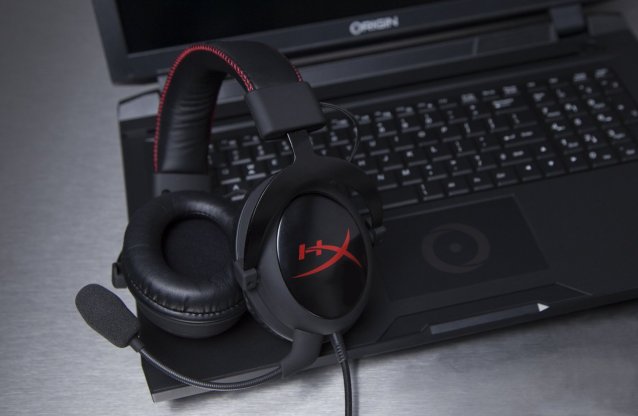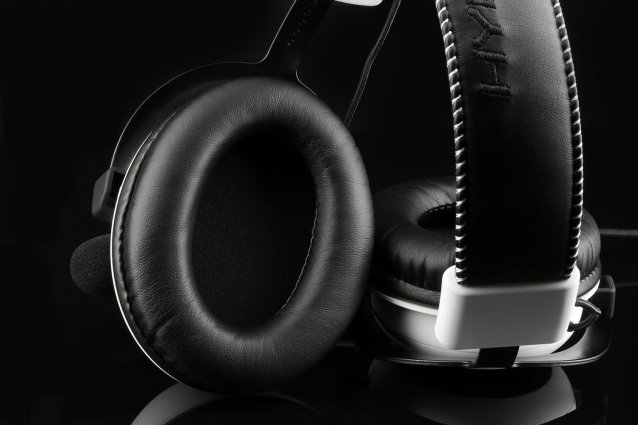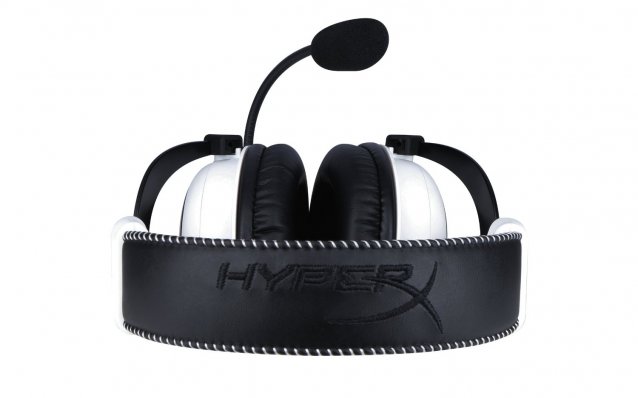


It came as a surprise to learn that Kingston, a company largely known for its variety of computer memory and storage, was releasing a gaming headset. But what was even more surprisingly was just how quickly I found myself reaching for their first foray into that crowded market over other audio peripherals that cost nearly twice as much.
Co-developed by QPAD, the Kingston HyperX Cloud is at first glance a no-nonsense stereo headset for the PC, PlayStation 4, and other devices that offer a 3.5mm connection. It features 53mm drivers, a frequency response of 15Hz to 25KHz, a detachable microphone, a closed-cup design for that extra bit of bass, and currently retails on Amazon for $79.99. However, it separates itself from the chaff with an all-around professional quality that's not often seen in that price range, the first example of which is the decent assortment of extras encased within the box.
The HyperX Cloud initially impresses with its gaudy-free packaging. The interior box is all black, emblazoned only with a glossy, silver HyperX logo. Opening the top half reveals a welcoming letter on its underside writ in similar fashion, and layers of foam that cover and surround the actual product.
The headset rests in the middle. Included in its clear plastic bag is an additional set of ear cups with velour padding. Situated to its sides are the detachable microphone, an audio control box with the standard mute, volume and call buttons, and an airline adapter. A smaller box below houses an extension cable, Y-splitter and a carrying bag that even has a pouch for accessories.

A closer look at the headset reveals an understated but solid construction. Nothing about it screams, "This is for video games!" The circumaural cups are backed with aluminum, the rest of which is sturdy, rubberized plastic. The microphone port is housed in the left cup, but an included cover allows you to hide it if you so wish. The headband is also made of aluminum and padded with soft leather. A stitched HyperX logo sits on top. Its altogether feels very durable, an attribute shared also by its thick, braided cabling. My only complaint, particularly as a pet owner whose cat likes to chew all my damn wires, is that I would have preferred the microphone to share its detachable quality with the cable.
Despite its smaller profile, the HyperX Cloud is one of the most comfortable headsets I've ever worn. The circumaural cups fit perfectly over my ears, while the leather pads create a firm, noise-isolating seal that's never too tight nor hot as to distract the wearer. I was able to wear them for hours without having to fidget with their position. My ears thankfully lacked the usual desire for calisthenics after those long sessions. The included velour pads are even more comfortable, though they do change the headset's sound signature. It's also worth noting the black velour fabric has a greater tendency to collect dirt, but the option is always appreciated.
When it came time to test its sound performance, my go-to game for that purpose was The Last of Us Remastered for the PlayStation 4. Not only does it have great audio design in general, but developer Naughty Dog packed every scene with atmospheric, ambient noises. Desolate skyscrapers moan in their collapse, sounds of which and more the HyperX is wonderfully adept at picking out. Better still, the headset's strong bass meant I could feel as well as hear every groan of that dying world. It truly helped to put me in the game, making every encounter all the more tense.

The balanced, crisp sound make the headset a good choice for music, too. Vocals are clear, not too recessed and free of any distortion, and every beat is impactful thanks to its tight bass response. And if you want to take it on the go, the HyperX Cloud's tasteful aesthetics won't embarrass, either.
As a closed headset with the leather ear pads, noise isolation is excellent. No one will hear what you're listening to, nor you the outside world. As a result, the sound stage - the perception of space and size relative to the position of the source - is somewhat narrow. It doesn't match the same wide dimension open-backed headphones can provide, and thus positioning in video games is harder to pinpoint, but the HyperX Cloud doesn't draw attention to that fact by sounding claustrophobic. That's a problem other closed, similarly priced headsets often have, so I'm rather pleased with how well the Kingston manages here. Swapping to the velour pads opens the headset up a degree, though it will cost you isolation and lower the strength of its bass.
The detachable microphone works as advertised and is quite malleable for easy adjustment. My voice came in loud and clear during Skype calls or The Last of Us multiplayer matches. It certainly wasn't an echo chamber like my Logitech desktop microphone or the small, tinny sound from those bundled with the Xbox and PlayStation systems.
Audiophiles tend to snub their noses at the idea of gaming headsets, but recent years show numerous manufacturers entering the field with some real, quality choices. The HyperX Cloud is another prime example of just how far that market has come. And for their first gaming headset, Kingston comes out of the gate swinging. It offers an exceptional value with big sound, hardy construction, impossible to beat comfort, good looks and a bevy of accessories for its modest price. If you're looking for a new headset, keep this one at the top of your list.




 Destiny Buyers Guide
Destiny Buyers Guide How to Fix Titanfall Crashes, Graphic Problems and More
How to Fix Titanfall Crashes, Graphic Problems and More 4 Web Games That'll Get You Laughing Out Loud
4 Web Games That'll Get You Laughing Out Loud The Last of Us: Remastered Training Manual Collection Walkthrough
The Last of Us: Remastered Training Manual Collection Walkthrough Playing 2048: 20 Of The Best Versions Of The Addictive Puzzle Game [Weird & Wonderful Web]
Playing 2048: 20 Of The Best Versions Of The Addictive Puzzle Game [Weird & Wonderful Web]